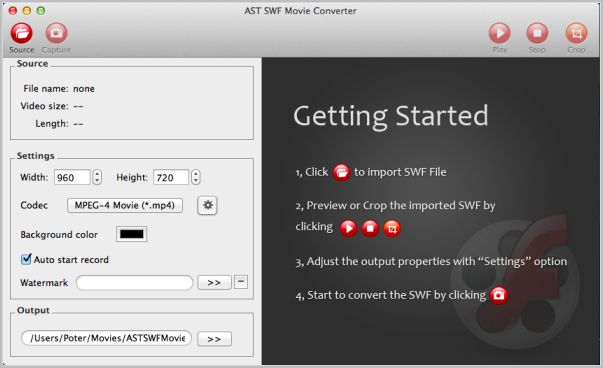
Support Video Quality options to change lossless quality for a video.Support Drag and Drop files into the app.Support 10+ Popular Audio format with bitrate and channel enhancement.Convert Video into 25+ supported output formats in one click.Convert large HD videos and movies as well.Supports All popular video/audio formats with lossless compression.* Updates: Drag and Drop feature to add audio video files are added.* * FYI:* Kindly Be Patient, Sometimes Snap Applications Take A While To Launch At First Time InstallationsįormatLab is a powerful Video/Audio Converter and Compressor for Linux OS which supports MP3, MP4, AVI, WMV, MKV or other file formats with Lossless Quality conversion. iOrgsoft SWF Converter can easily convert almost any source SWF file including SWF games to a wide range of multimedia file formats like MP4, MOV, AVI, FLV, H. Play Converted Videos/Audios In App Itself.Cool System Monitor App inside to see your CPU usage while converting.Support FPS option to decrease frame per second of a video. Expect new updates and more format support in near future.NOTE: FutureWave and Macromedia first developed Flash in the 1990s Adobe Systems acquired Macromedia in 2005. Adobe and many web browser developers officially ended support for Flash on December 31, 2020. However, as web technologies improved, Flash became increasingly criticized for its shortcomings, which included performance and security issues. The files could be played by the free Flash Player or with a web browser that had the Flash plug-in installed.

However, as SWF files became a standard means of publishing Flash content on the web, the acronym was modified to instead mean Small Web Format.Ĭontent developers primarily used Adobe Flash (now Animate), Flash Builder, and After Effects to create SWF animations.

SWF was originally an acronym for Shockwave Flash, since the SWF format was designed for Shockwave Player. Convert SWF (Small Web Format) video file online - The list shows what formats can convert to SWF and what formats can be converted from SWF.


They were also a popular means of delivering browser-based games. SWF (pronounced "Swiff") files were commonly used to bring animated graphics, video, and sound to the web in the 2000s and 2010s.


 0 kommentar(er)
0 kommentar(er)
